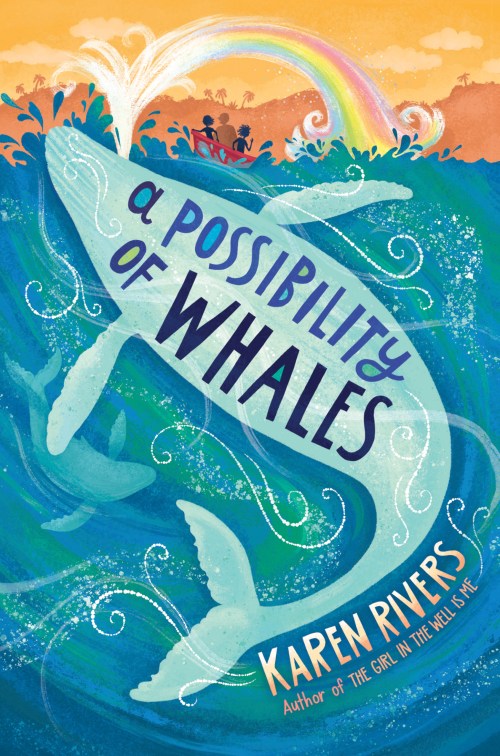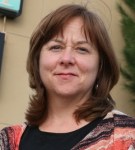Varian Johnson is the author of several novels for children and young adults, including The Great Greene Heist, which was an ALA Notable Children’s Book, a Kirkus Reviews Best Book of 2014, and a Texas Library Association Lone Star List selection, and To Catch a Cheat, another Jackson Greene adventure and a Kids’ Indie Next List pick. He lives with his family near Austin, Texas. You can find him on the web at www.varianjohnson.com and @varianjohnson.
Varian’s newest book, The Parker Inheritance (Arthur A. Levine/ Scholastic) will come out next week, and has received starred reviews from School Library Journal, The Horn Book, and Kirkus, and is a Junior Library Guild Spring 2018 Selection. 
About the book:
“When Candice finds a letter in an old attic in Lambert, South Carolina, she isn’t sure she should read it. It’s addressed to her grandmother, who left the town in shame. But the letter describes a young woman. An injustice that happened decades ago. A mystery enfolding the letter-writer. And the fortune that awaits the person who solves the puzzle.
So with the help of Brandon Jones, the quiet boy across the street, she begins to decipher the clues. The challenge will lead them deep into Lambert’s history, full of ugly deeds, forgotten heroes, and one great love; and deeper into their own families, with their own unspoken secrets. Can they find the fortune and fulfill the letter’s promise before the answers slip into the past yet again?”
How does your engineering background inform your writing?
The Parker Inheritance was probably influenced by my engineering career more than any of my other books. There are a lot of math terms in the book, much of which I learned while getting my civil engineering degree. But there’s also a very big difference between designing bridges and writing books. And as much as I liked my engineering job, I’m very happy now be a full-time children’s book author.

The Parker Inheritance pays homage to the classic puzzle novel, The Westing Game by Ellen Raskin. (The Cooperative Children’s’ Book Center at UW-Madison has many of her notes and drafts archived here.) Can you tell us about your process for constructing the Parker puzzle(s) and deciding how the clues would reveal the answer?
The novel that would eventually become The Parker Inheritance started off as two separate novel ideas, with one being a puzzle mystery and the other being a historical multi-generational novel. I tinkered with both on and off for years, but neither idea was strong enough to stand alone. It wasn’t until rereading Holes that I got the idea to combine the ideas. The puzzle was pretty well developed when I began writing the book—and it was surprising how well the puzzle fit into the larger historical story. Even though I was consciously writing two books, maybe my subconscious always knew that the stories belonged together.
Like your Jackson Greene books, The Parker Inheritance involves complex details for the characters to put together, but in a sort of reverse way. Instead of building the details into a caper like “Gang Greene,” Candice and Brandon are breaking down a mystery by revealing the details. Did that difference influence your approach to the writing?


Oh, totally. Candice and Brandon’s strategies mirror the real-life sleuthing I did to create and “solve” the puzzle. I ran each of the web searches that they performed in order to see what popped up—to make sure that the answer to a clue wasn’t revealed too quickly. In many ways, it was easy to write about the techniques that Candice and Brandon used for deciphering the letter, as I had performed that very same research to write the book.
What made you decide to use flashbacks and multiple points of view to tell part of the story instead of sticking with Candice’s POV?
I thought it was important to see the lives of the people from the puzzle through their own eyes—not just Candice and Brandon’s viewpoints. I also thought it would be interesting to show how race relations have improved from the 1950s to today…and unfortunately to also show how race relations have stayed the same.
If there was one single thing that you wanted readers to get from The Parker Inheritance what would it be?
If anything, I want readers to think about the preferences and preconceptions that they bring into any interaction. I want readers to question what they believe when they see someone; when they speak with someone. I want reader to step past their internal biases in order to see the real person standing in front of them.
What other books do you recommend to readers who enjoyed The Parker Inheritance?
The Westing Game, obviously! But also The Watsons Go To Birmingham—1963, Holes, March Book 3, and When You Reach Me.
And now for the giveaway:



 Karen Rivers grew up in British Columbia, where she takes loads of photos, goes on lots of walks, and writes books. She believes that stories are all secret passages to alternate worlds where we can be safe to explore the unsafe, the unsettling or the unfair hands some people have been dealt. She also believes in you. Find Karen on her
Karen Rivers grew up in British Columbia, where she takes loads of photos, goes on lots of walks, and writes books. She believes that stories are all secret passages to alternate worlds where we can be safe to explore the unsafe, the unsettling or the unfair hands some people have been dealt. She also believes in you. Find Karen on her 

 MKC: What’s next for Sarah Albee?
MKC: What’s next for Sarah Albee? Your host this week is
Your host this week is